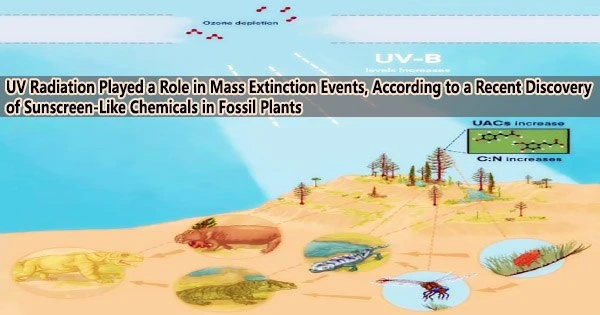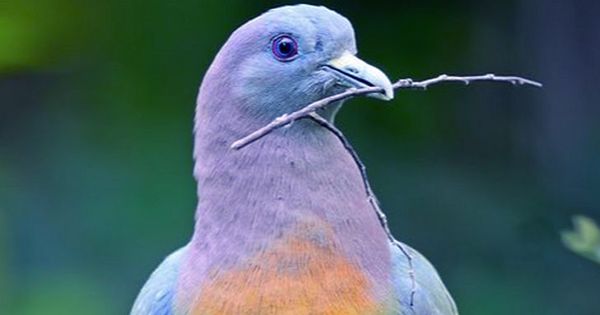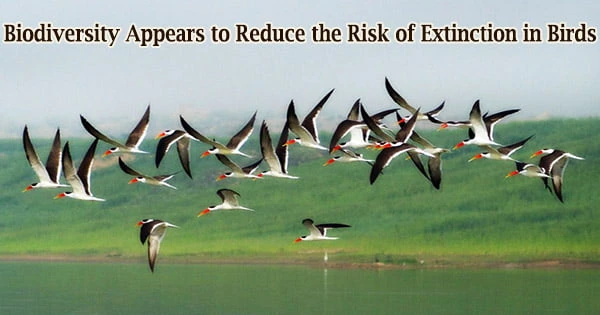A recent study has revealed that certain chemicals found in fossilized plants have a similar function to sunscreen, protecting the plants from ultraviolet (UV) radiation. The study suggests that the presence of these sunscreen-like compounds in ancient plants could indicate that UV radiation played a role in mass extinction events.
According to recent research, plants create molecules that act as sunscreen in order to protect themselves from harmful ultraviolet (UV-B) radiation, and these compounds are found in pollen preserved in rocks that are 250 million years old. The evidence points to the importance of a UV-B pulse in the end-Permian mass extinction catastrophe.
Scientists from the University of Nottingham, China, Germany and the UK led by Professor Liu Feng from Nanjing Institute of Geology and Palaeontology have developed a new method to detect plant’s sunscreen-like compounds in fossil pollen grains. The research has been published today in Science Advances.
The end-Permian mass extinction event (250 million years ago), which resulted in the extinction of ~80% or more of marine and terrestrial species, is the worst of the major five mass extinction events.
Volcanism on such a cataclysmic scale impacts on all aspects of the Earth system, from direct chemical changes in the atmosphere, through changes in carbon sequestration rates, to reducing volume of nutritious food sources available for animals.
Dr. Wes Fraser
In reaction to a palaeoclimate emergency brought on by the eruption of a continental-scale volcano that covered much of present-day Siberia, there was a catastrophic loss of biodiversity.
Large-scale greenhouse warming was caused by the release of enormous amounts of carbon that had been trapped in the Earth’s interior and was triggered by volcanic activity. A breach in the ozone layer on Earth coincided with this case of global warming. The prevalence of pollen grains and spores with abnormal shapes, which attest to an input of mutagenic UV radiation, lends support to this notion.
Professor Barry Lomax from the University of Nottingham explains, “Plants require sunlight for photosynthesis but need to protect themselves and particularly their pollen against the harmful effects of UV-B radiation. To do so, plants load the outer walls of pollen grains with compounds that function like sunscreen to protect the vulnerable cells to ensure successful reproduction.”
Professor Liu Feng adds: “We have developed a method to detect these phenolic compounds in fossil pollen grains recovered from Tibet, and detected much higher concentrations in those grains that were produced during the mass extinction and peak phase of volcanic activity.”
Even more far-reaching and long-lasting effects on the entire Earth System may result from elevated UV-B levels. Increased UV-B exposure decreases plant biomass and land carbon storage, which would accelerate global warming, according to recent modeling studies.
In addition to making plant tissue less easily digested due to the increased phenolic chemical concentration, this creates for an even more unfriendly environment for herbivores.
Summarising the groups findings Dr. Wes Fraser based at Oxford Brookes University commented: “Volcanism on such a cataclysmic scale impacts on all aspects of the Earth system, from direct chemical changes in the atmosphere, through changes in carbon sequestration rates, to reducing volume of nutritious food sources available for animals.”
















